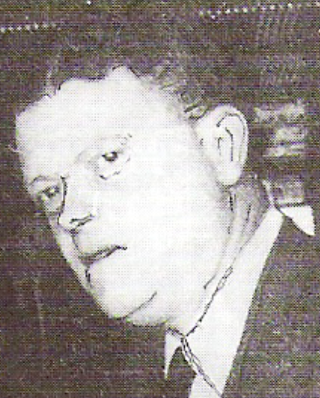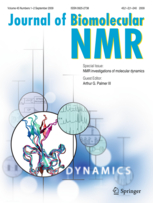
Sir Harold Warris Thompson, CBE, FRS was an English physical chemist and spectroscopist, who also served as chairman of the Football Association.

Laser-induced breakdown spectroscopy (LIBS) is a type of atomic emission spectroscopy which uses a highly energetic laser pulse as the excitation source. The laser is focused to form a plasma, which atomizes and excites samples. The formation of the plasma only begins when the focused laser achieves a certain threshold for optical breakdown, which generally depends on the environment and the target material.
Photoacoustic spectroscopy is the measurement of the effect of absorbed electromagnetic energy on matter by means of acoustic detection. The discovery of the photoacoustic effect dates to 1880 when Alexander Graham Bell showed that thin discs emitted sound when exposed to a beam of sunlight that was rapidly interrupted with a rotating slotted disk. The absorbed energy from the light causes local heating, generating a thermal expansion which creates a pressure wave or sound. Later Bell showed that materials exposed to the non-visible portions of the solar spectrum can also produce sounds.

The Journal of Biomolecular NMR publishes research on technical developments and innovative applications of nuclear magnetic resonance spectroscopy for the study of structure and dynamic properties of biopolymers in solution, liquid crystals, solids and mixed environments. Some of the main topics include experimental and computational approaches for the determination of three-dimensional structures of proteins and nucleic acids, advancements in the automated analysis of NMR spectra, and new methods to probe and interpret molecular motions.

Sodium aurothiosulfate, or sanocrysin, is the inorganic compound with the formula Na3[Au(S2O3)2]·2H2O. This salt contains an anionic coordination complex of gold(I) bound to two thiosulfate ligands. It is colorless.

Oxicam is a class of non-steroidal anti-inflammatory drugs (NSAIDs), meaning that they have anti-inflammatory, analgesic, and antipyretic therapeutic effects. Oxicams bind closely to plasma proteins. Most oxicams are unselective inhibitors of the cyclooxygenase (COX) enzymes. The exception is meloxicam with a slight (10:1) preference for COX-2, which, however, is only clinically relevant at low doses.
Noise-immune cavity-enhanced optical-heterodyne molecular spectroscopy (NICE-OHMS) is an ultra-sensitive laser-based absorption technique that utilizes laser light to assess the concentration or the amount of a species in gas phase by absorption spectrometry (AS).

Oxalic anhydride or ethanedioic anhydride, also called oxiranedione, is a hypothetical organic compound, one of several isomers having the formula C2O3 that have been studied computationally. It can be viewed as the anhydride of oxalic acid or the two-fold ketone of ethylene oxide. It is an oxide of carbon (an oxocarbon).
Boussingaultite is a rare ammonium magnesium hydrated sulfate mineral of the chemical formula: (NH4)2Mg(SO4)2 · 6 H2O. The formula of boussingaultite is that of Tutton's salts type. It was originally described from geothermal fields in Tuscany, Italy, where it occurs together with its iron analogue mohrite, but is more commonly found on burning coal dumps. The mineral possess monoclinic symmetry and forms clear, often rounded crystals.

3-Hydroxyflavone is a chemical compound. It is the backbone of all flavonols, a type of flavonoid. It is a synthetic compound, which is not found naturally in plants. It serves as a model molecule as it possesses an excited-state intramolecular proton transfer (ESIPT) effect to serve as a fluorescent probe to study membranes for example or intermembrane proteins. The green tautomer emission and blue-violet normal emission originate from two different ground state populations of 3HF molecules. The phenomenon also exists in natural flavonols. Although 3-hydroxyflavone is almost insoluble in water, its aqueous solubility can be increased by encapsulation in cyclodextrin cavities.

Mearnsetin is an O-methylated flavonol. It can be found in Eucalyptus globulus and in Elaeocarpus lanceofolius. The compound has antioxidative properties.
Azam Ali is a Bangladeshi scientist known internationally as biomaterials and bioengineering experts for having developed a wound dressing, which earned him the Bayer Innovators Award in 2010.

The term macromolecular assembly (MA) refers to massive chemical structures such as viruses and non-biologic nanoparticles, cellular organelles and membranes and ribosomes, etc. that are complex mixtures of polypeptide, polynucleotide, polysaccharide or other polymeric macromolecules. They are generally of more than one of these types, and the mixtures are defined spatially, and with regard to their underlying chemical composition and structure. Macromolecules are found in living and nonliving things, and are composed of many hundreds or thousands of atoms held together by covalent bonds; they are often characterized by repeating units. Assemblies of these can likewise be biologic or non-biologic, though the MA term is more commonly applied in biology, and the term supramolecular assembly is more often applied in non-biologic contexts. MAs of macromolecules are held in their defined forms by non-covalent intermolecular interactions, and can be in either non-repeating structures, or in repeating linear, circular, spiral, or other patterns. The process by which MAs are formed has been termed molecular self-assembly, a term especially applied in non-biologic contexts. A wide variety of physical/biophysical, chemical/biochemical, and computational methods exist for the study of MA; given the scale of MAs, efforts to elaborate their composition and structure and discern mechanisms underlying their functions are at the forefront of modern structure science.

Spectrochimica Acta Part B: Atomic Spectroscopy is a monthly peer-reviewed scientific journal covering spectroscopy.

Robin Jon Hawes Clark was a New Zealand-born chemist initially noted for research of transition metal and mixed-valence complexes, and later for the use of Raman spectroscopy in determining the chemical composition of pigments used in artworks.
Lisa-Marie Shillito is a British archaeologist and senior lecturer in landscape archaeology as well as director of the Wolfson Archaeology Laboratory and Earthslides at Newcastle University. Her practical work focuses on using soil micromorphology, phytolith analysis and geochemistry in order to understand human behaviour and landscape change. Her work includes the Neolithic settlements of Çatalhöyük in Turkey and Ness of Brodgar and Durrington Walls in Britain, but also Crusader castles and medieval settlements in Poland and the Baltic and in the Near East.
Stewart F. Parker is a British scientist specialising in vibrational spectroscopy and catalysis. He works at the ISIS neutron source and is an Honorary Professor in the school of Chemistry at the University of Glasgow.
Punctelia diffractaica is a species of foliose lichen in the family Parmeliaceae. It is found in Peru.
The phosphate sulfates are mixed anion compounds containing both phosphate and sulfate ions. Related compounds include the arsenate sulfates, phosphate selenates, and arsenate selenates.











